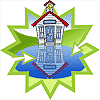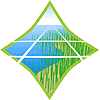A 6-8 Week Unit for Primary Level
Essential Question:
- What kinds of plants and animals live in or near the water?
Enduring Understandings:
-
Plants and animals can be sorted into groups based on different characteristics.
-
People use the plants and animals of the seas and rivers in different ways.
Ocean Literacy Principle Addressed:
- The ocean supports a great diversity of life and ecosystems.
- The ocean and humans are inextricably linked.
This unit is designed for First Grade, but could be adapted to other primary grades. Students discover the wide variety of living things that are found in and near the water, through investigations and games in the classroom and active observation outdoors. They practice science skills of noticing details, comparing, sorting, measuring, questioning, recording, and communicating. Science notebooks are used throughout the unit to help students understand and organize information, and many activities are integrated with math, language arts, art, and social studies.
 |
Investigation 1: Notice the Plants and Animals In this 6-8 day introductory investigation, students begin to notice and discover the aquatic plants and animals that live near them, looking at their environment from both broad and close-up viewpoints. Exploration in classroom centers continues throughout the unit. What plants and animals live in the environment around our school? What’s happening in one small square, near or in the water? How do scientists and subsistence users discover aquatic plants and animals? What do you notice? |
 |
Investigation 2: Plant and Animal Characteristics In this 8-11 day investigation, children begin to identify features of specific plants and animals, and to sort them into groups. They begin to learn vocabulary and grasp concepts of sorting as they describe and sort shells. They are introduced to marine invertebrates, see how they are grouped by their characteristics, and practice observing and describing characteristics of specific animals. Finally, a board game is used to review and reinforce what they have learned. What characteristics of shells can we notice? How can we group shells by their properties? What are the unique characteristics of the different groups of marine or freshwater invertebrates? What characteristics make this animal unique? What do we know about the characteristics of aquatic plants and animals? |
 |
Investigation 3: Plant and Animal Experts Plant and Animal Experts In this 9-12 day investigation, children continue to learn about the wide variety of aquatic plants and animals in their region. Each child then chooses a special plant or animal to research, depict, and share with the class. They learn more about their special species and others as they explore life cycles and tide-related behaviors, and end the investigation by making and sharing plant and animal riddles. How do we show what we know about a plant or animal? How can we find out more about one plant or animal? What are the life cycles of local animals? What different things do marine animals do at high tide and low tide? How do we identify animals based on their characteristics? |
 |
How can we find the plants and animals in our beach or river environment? |
 |
Investigation 5: What Have We Learned How do we share information? |
Authors:
Jennifer Thompson, Kindergarten Teacher, Juneau
Chris Thomas, Retired K-1 Teacher, Juneau
Stephanie Hoag, Curriculum Consultant, Juneau
Marla Brownlee, Sea Grant
With special thanks to Dayna Focht of Juneau for ideas and activities.








